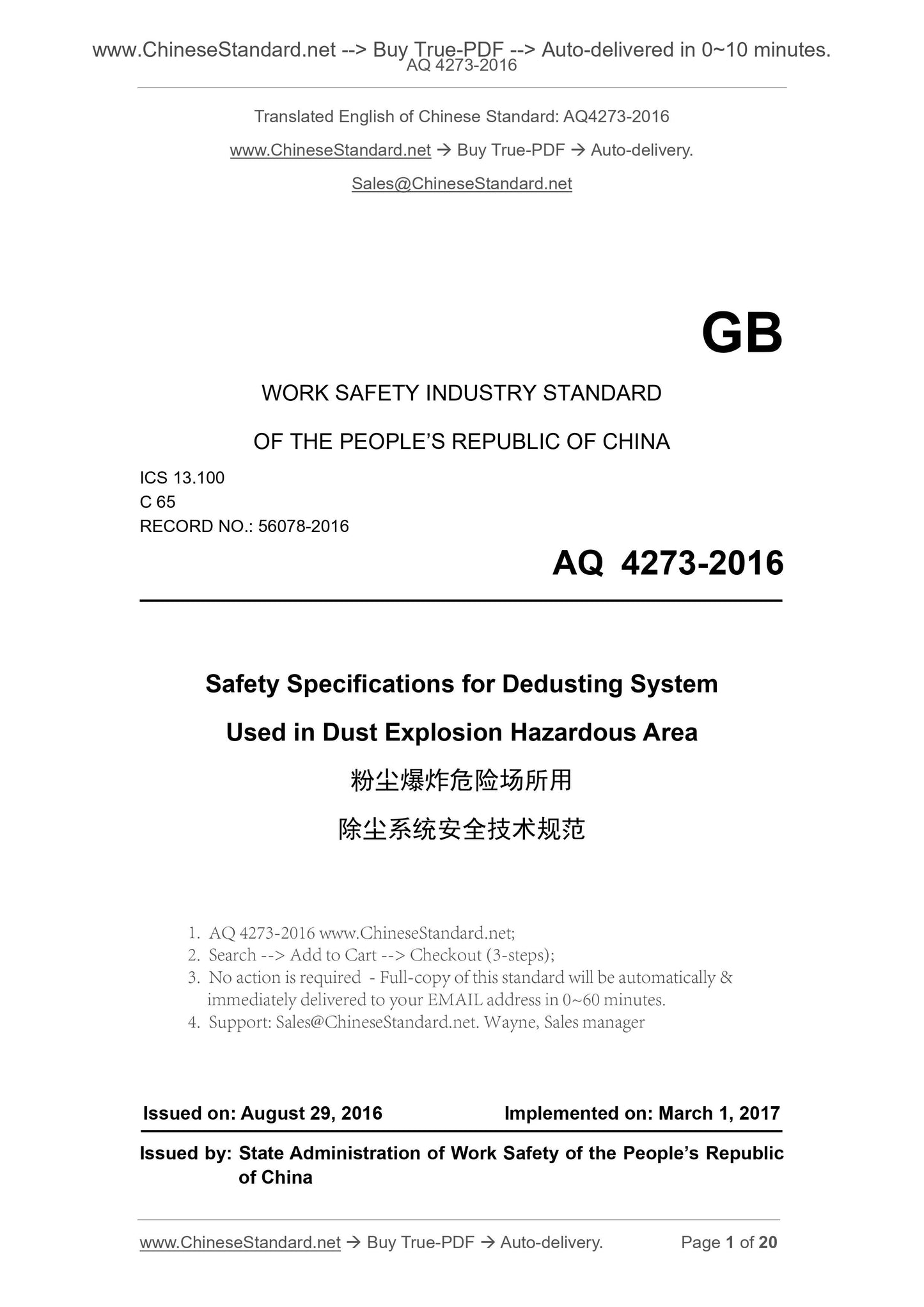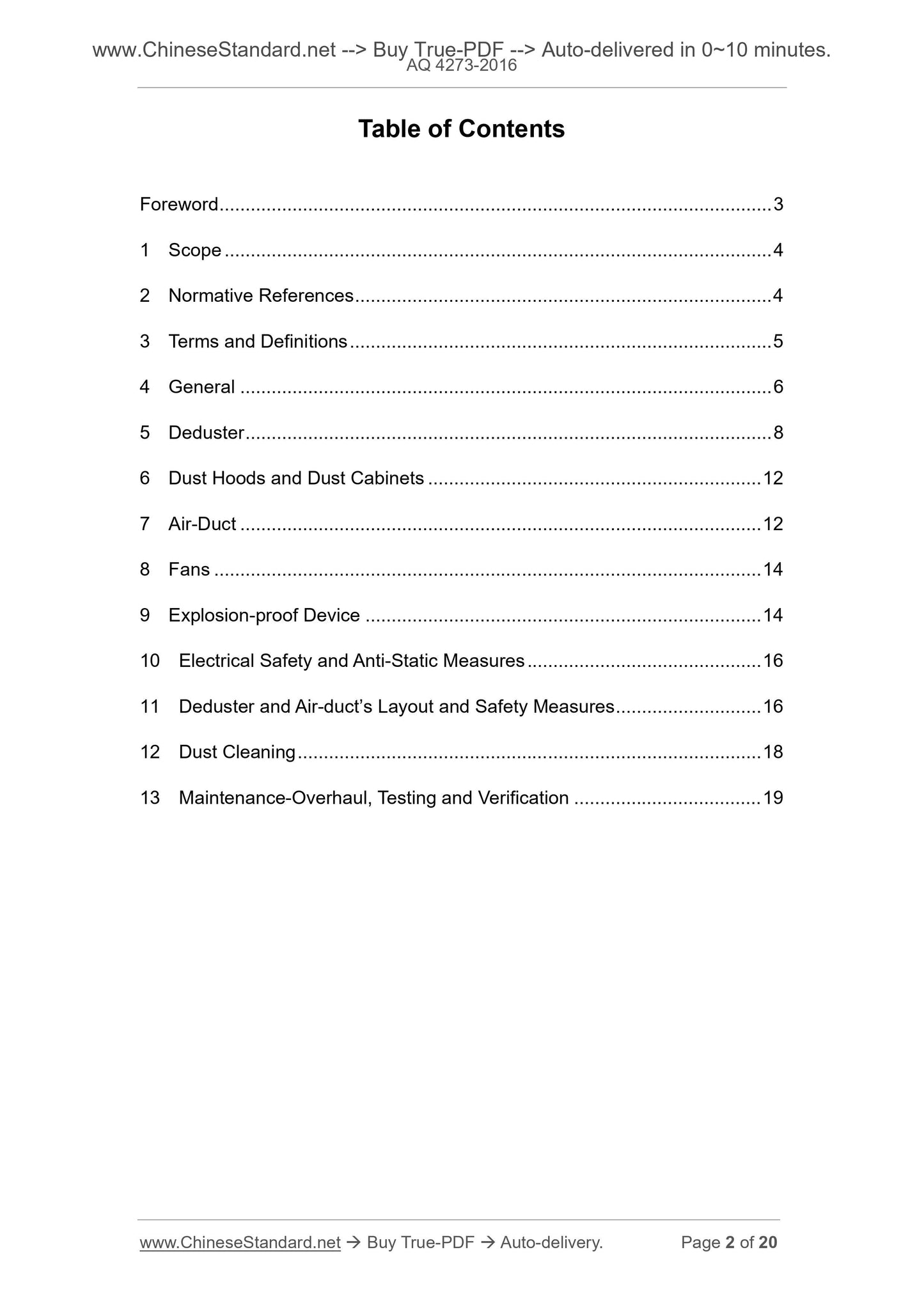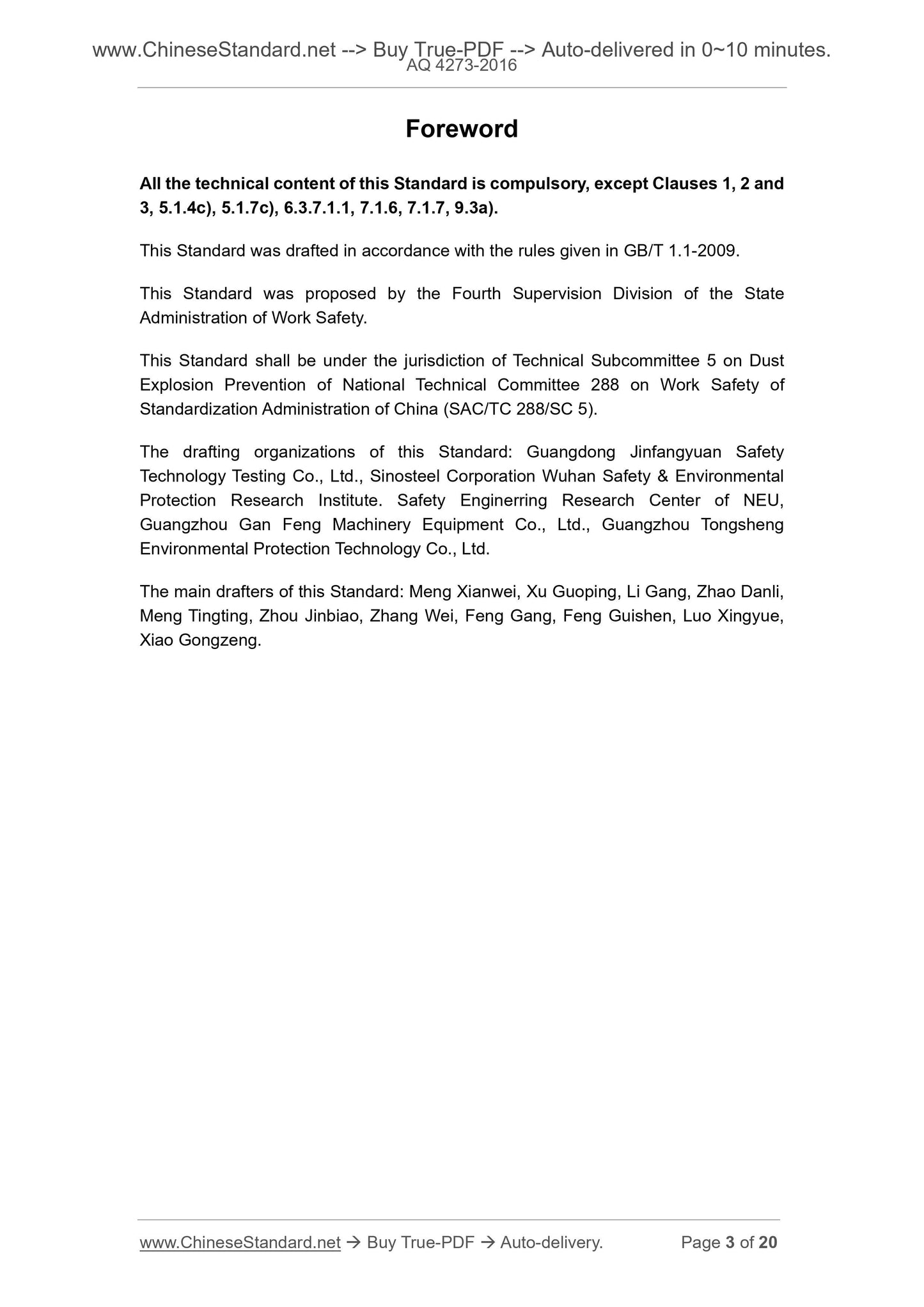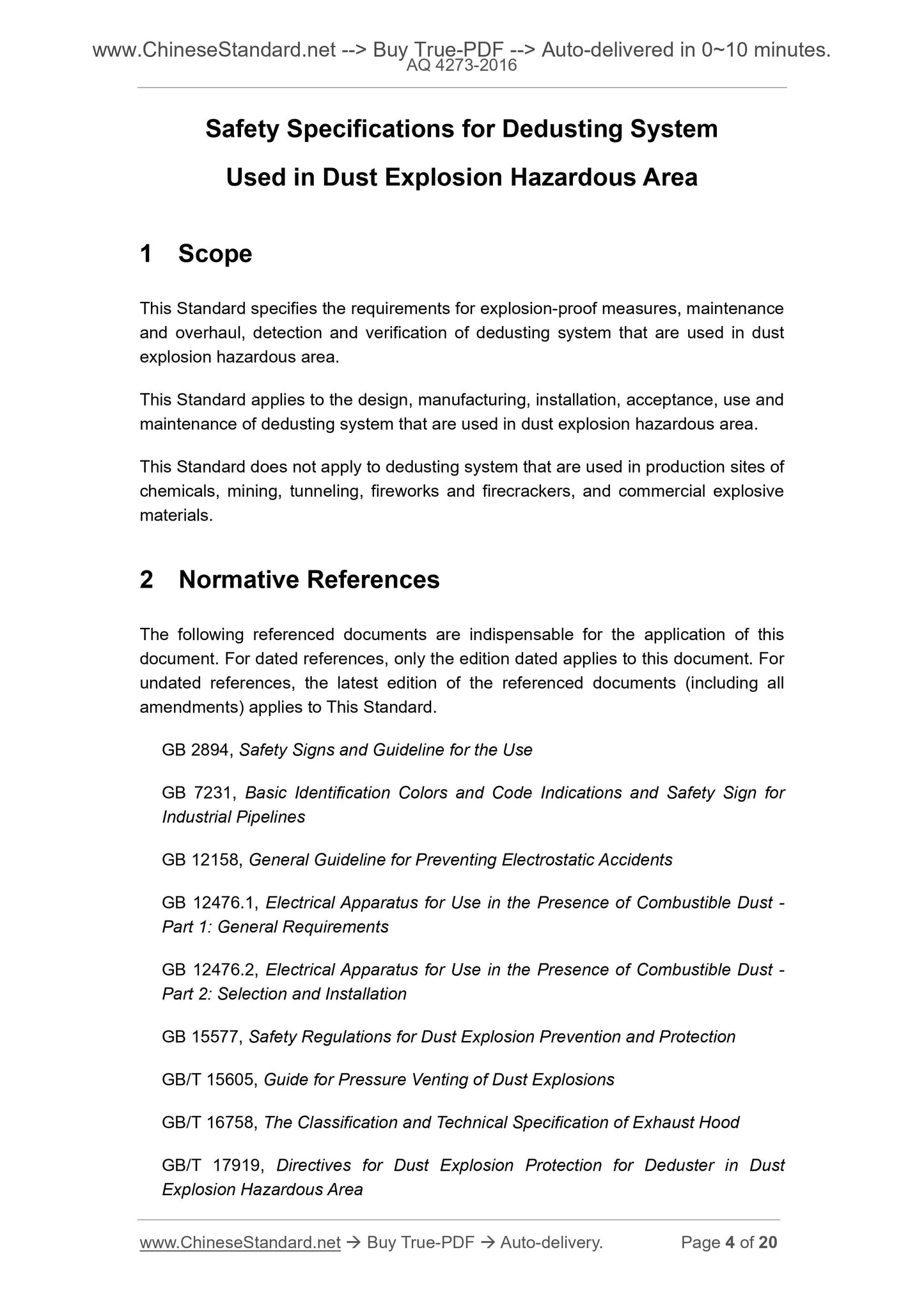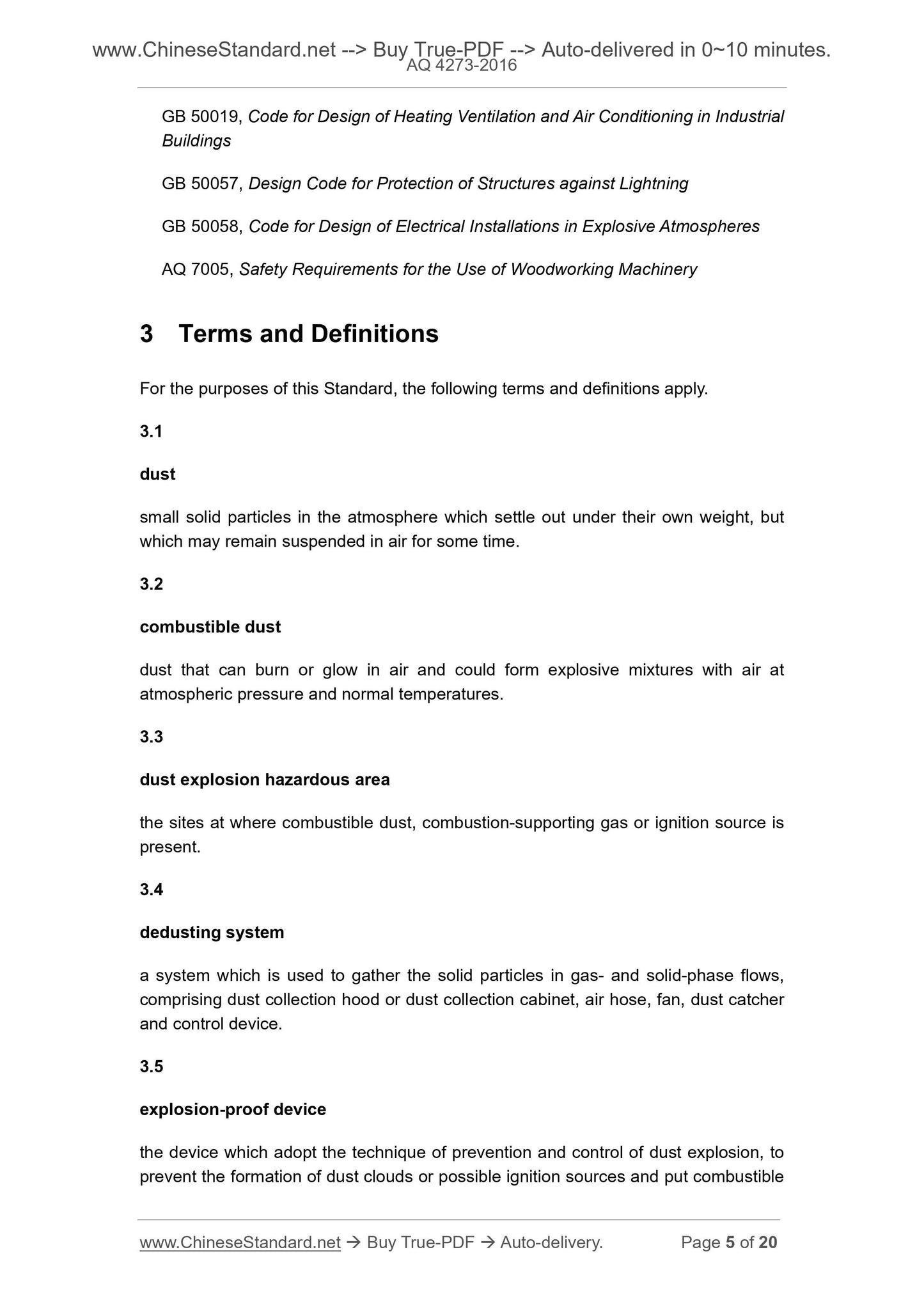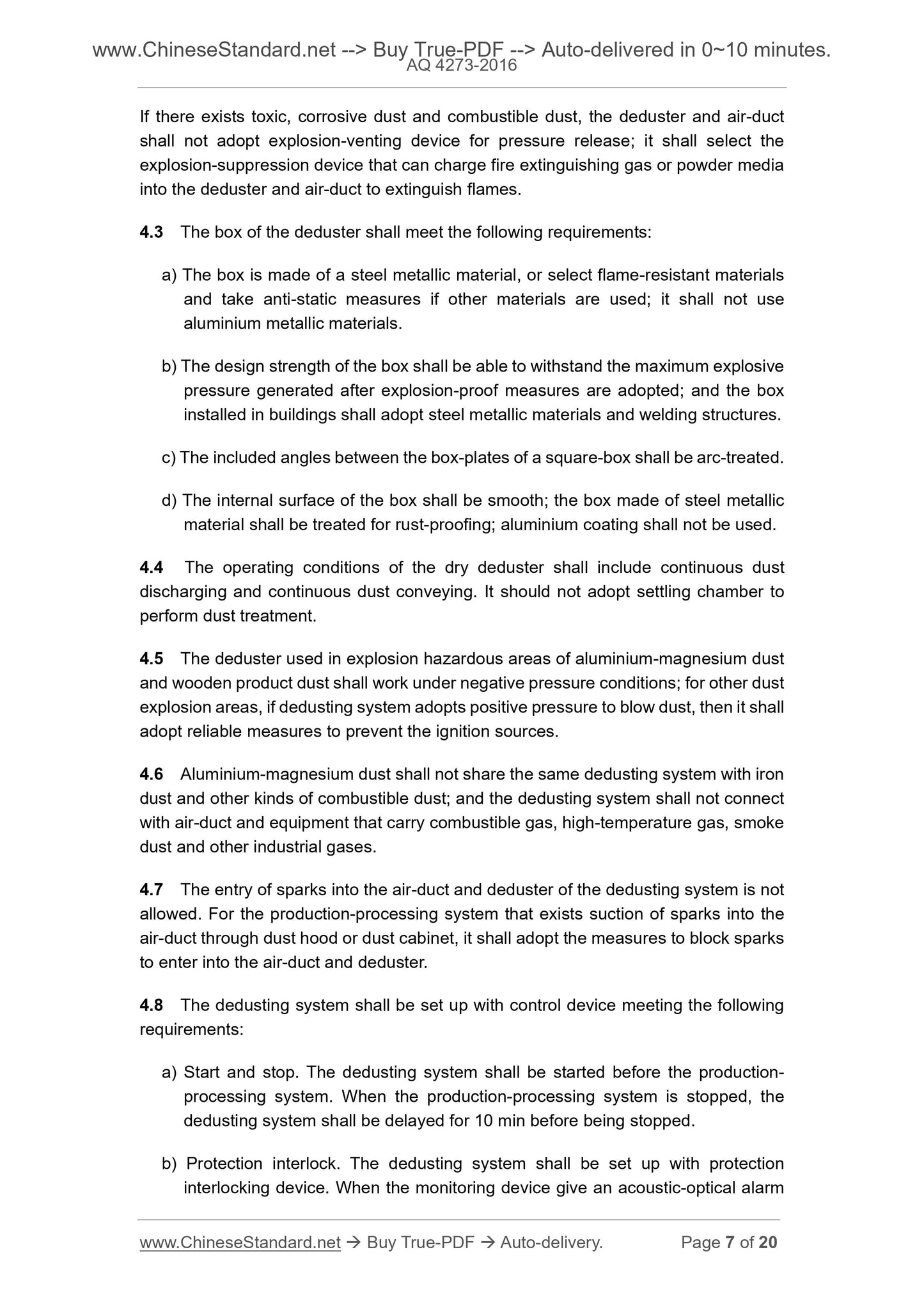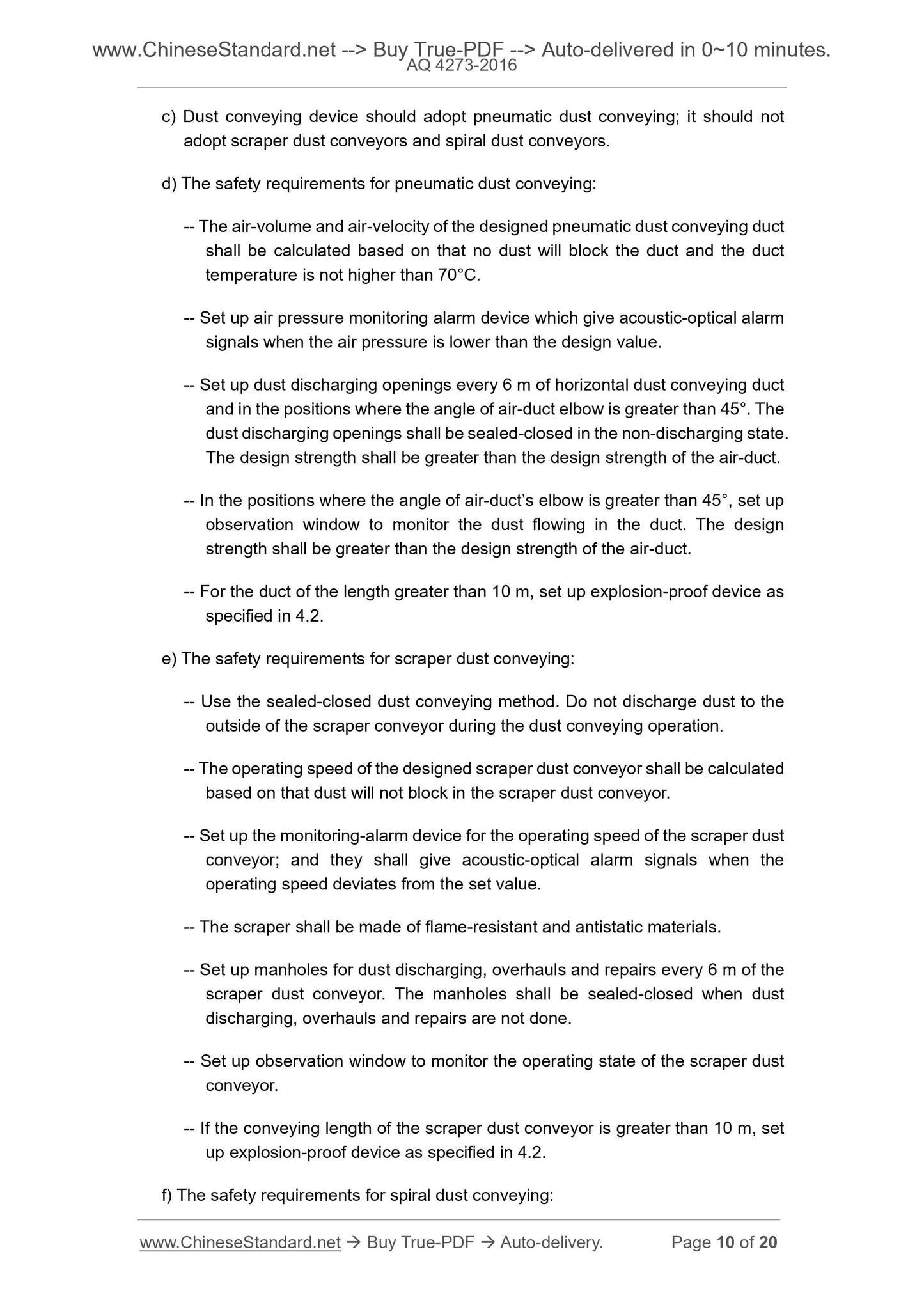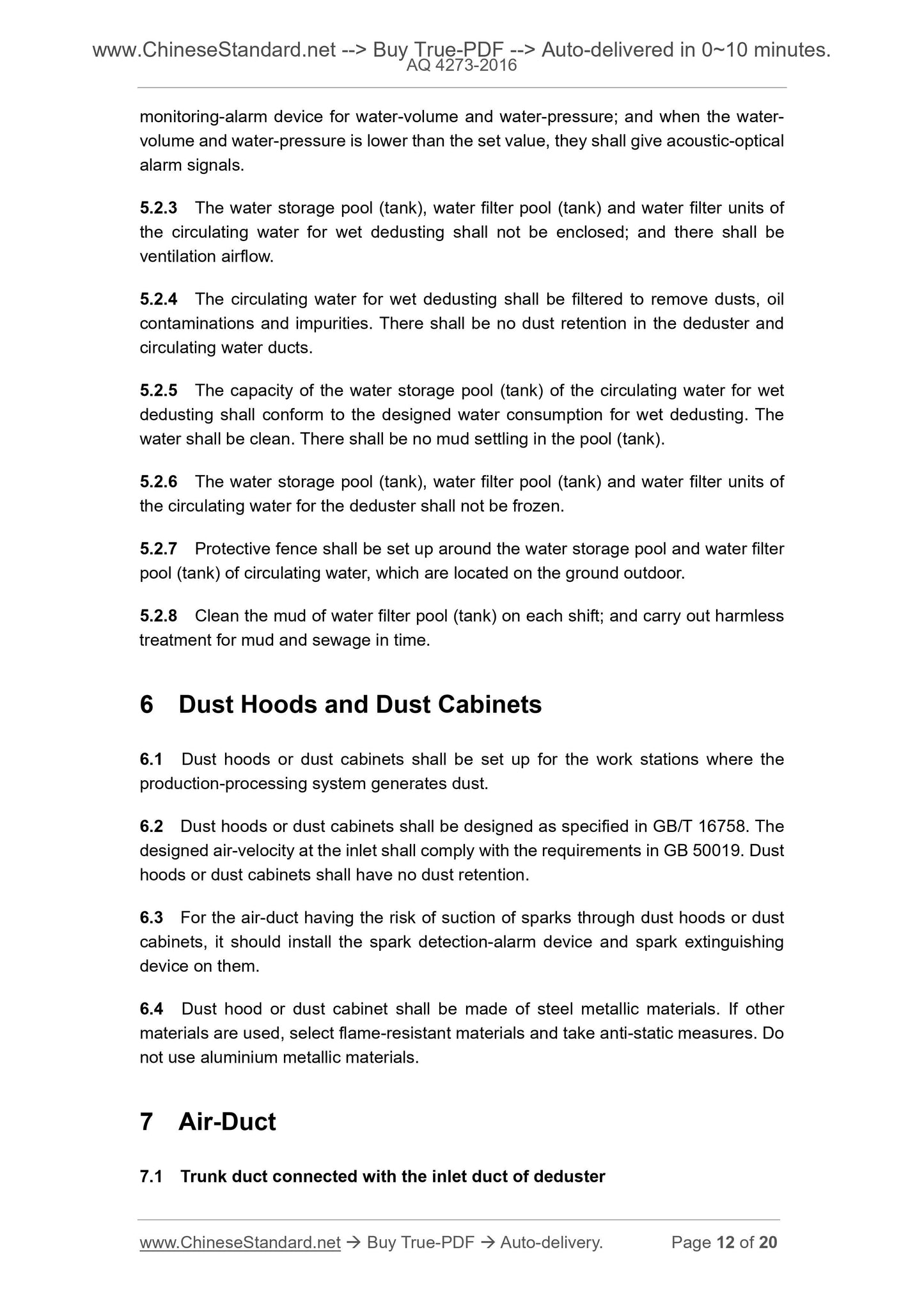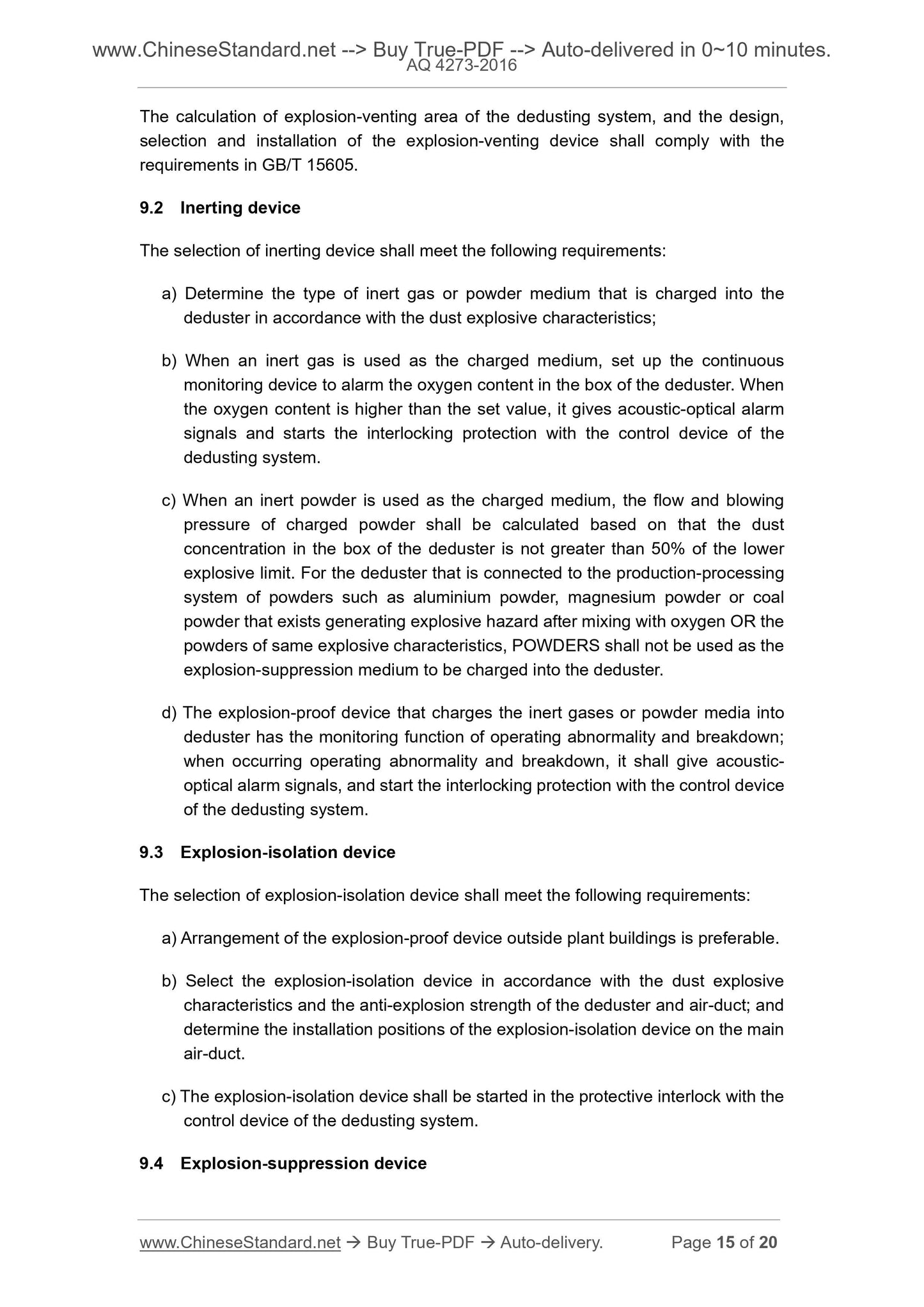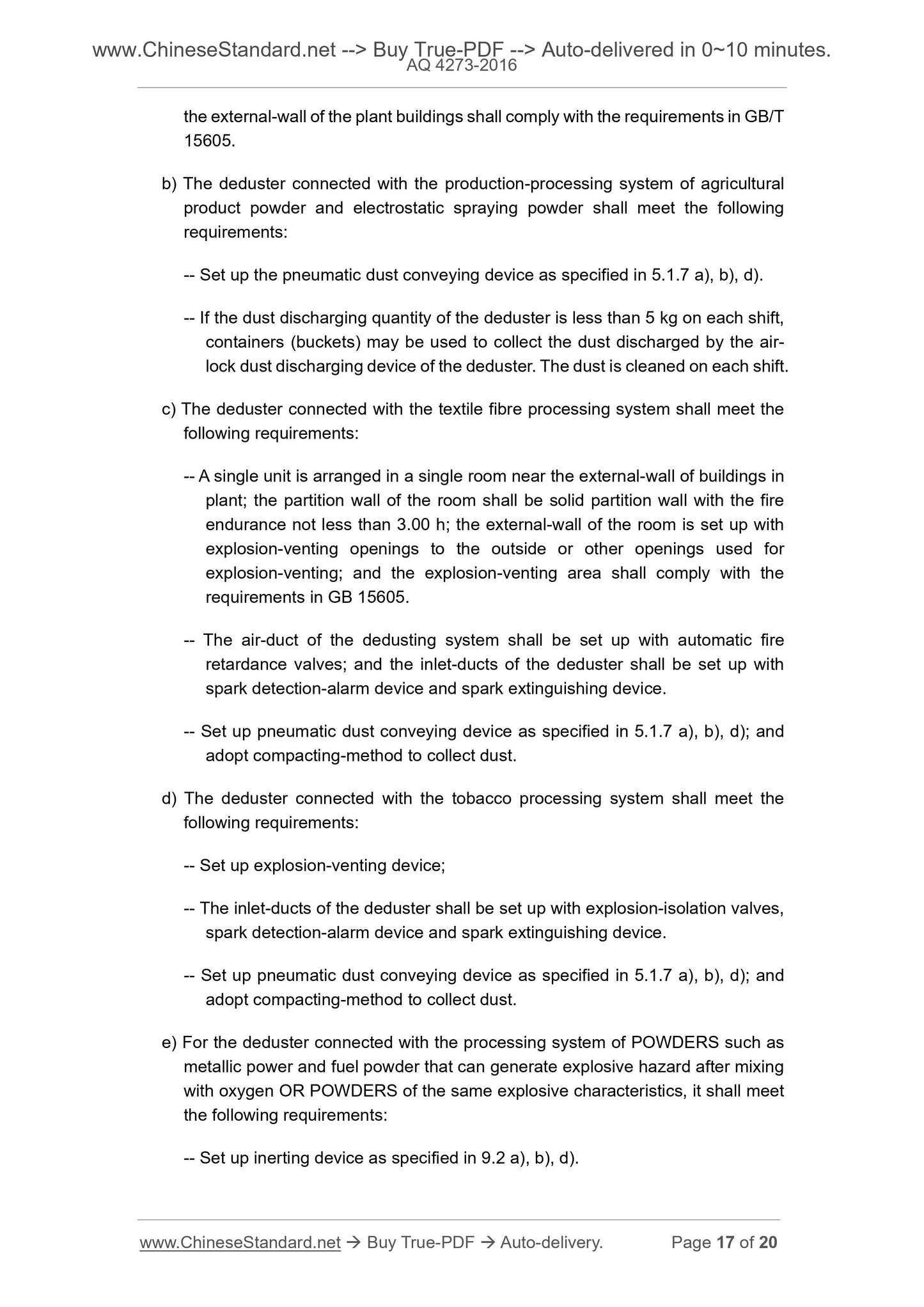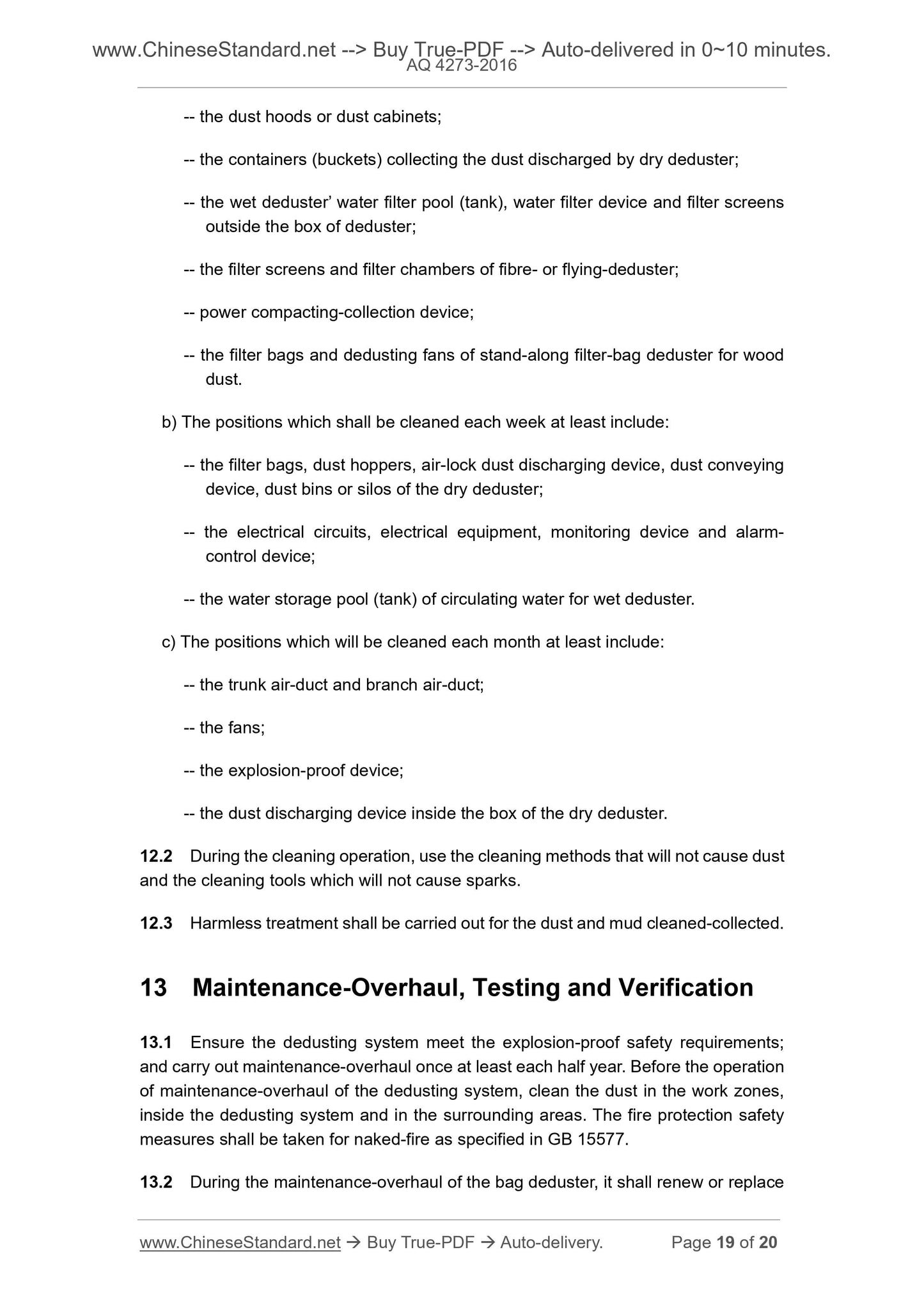1
/
of
11
www.ChineseStandard.us -- Field Test Asia Pte. Ltd.
AQ 4273-2016 English PDF
AQ 4273-2016 English PDF
Regular price
$145.00
Regular price
Sale price
$145.00
Unit price
/
per
Shipping calculated at checkout.
Couldn't load pickup availability
AQ 4273-2016: Safety Specifications for Dedusting System Used in Dust Explosion Hazardous Area
Delivery: 9 seconds. Download (and Email) true-PDF + Invoice.Get Quotation: Click AQ 4273-2016 (Self-service in 1-minute)
Newer / historical versions: AQ 4273-2016
Preview True-PDF
Scope
This Standard specifies the requirements for explosion-proof measures, maintenanceand overhaul, detection and verification of dedusting system that are used in dust
explosion hazardous area.
This Standard applies to the design, manufacturing, installation, acceptance, use and
maintenance of dedusting system that are used in dust explosion hazardous area.
This Standard does not apply to dedusting system that are used in production sites of
chemicals, mining, tunneling, fireworks and firecrackers, and commercial explosive
materials.
Basic Data
| Standard ID | AQ 4273-2016 (AQ4273-2016) |
| Description (Translated English) | Safety Specifications for Dedusting System Used in Dust Explosion Hazardous Area |
| Sector / Industry | Industrial Safety Standard |
| Classification of Chinese Standard | C65 |
| Word Count Estimation | 12,188 |
| Date of Issue | 2016-08-29 |
| Date of Implementation | 2017-03-01 |
| Regulation (derived from) | State Administration of Work Safety Announcement 2016 No.3 |
| Issuing agency(ies) | State Administration of Work Safety |
Share
